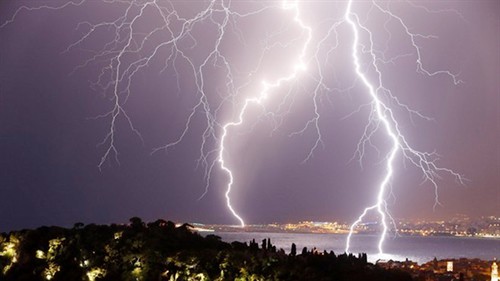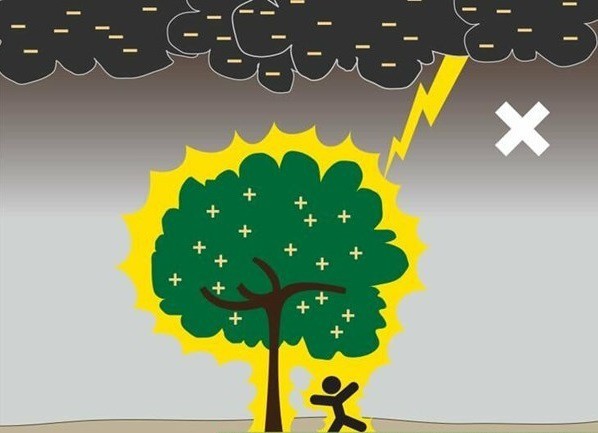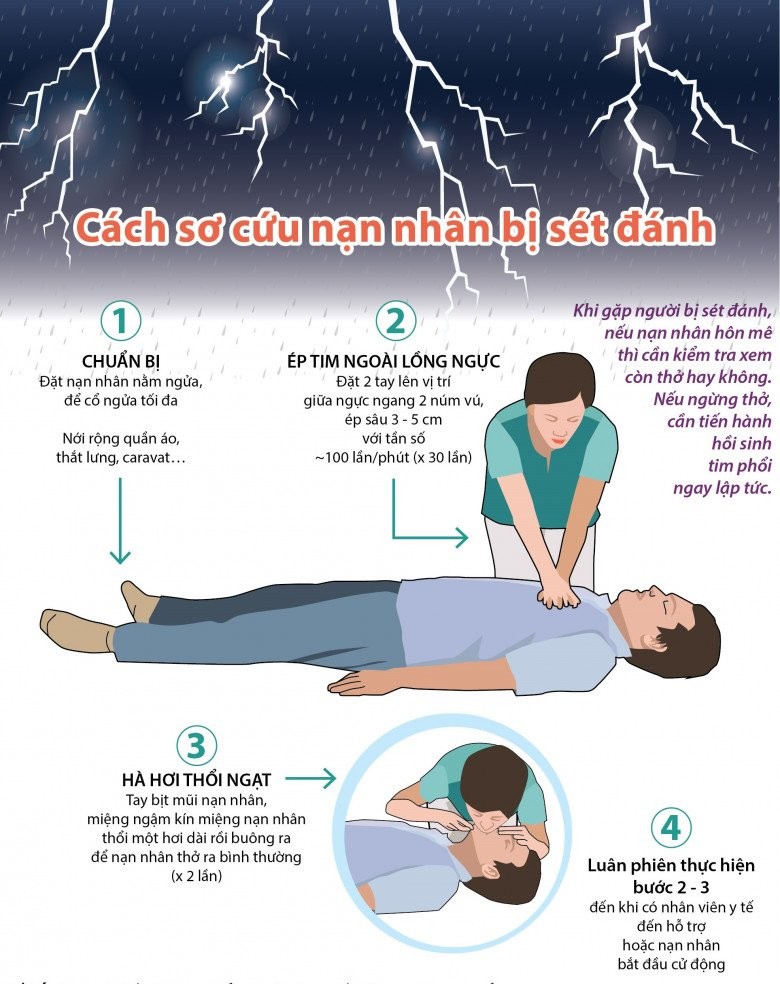According to information from the Office of the National Steering Committee for Natural Disaster Prevention, on the evening of May 19, heavy thunderstorms with lightning occurred across the northern provinces of [Country], resulting in three fatalities due to lightning strikes.
In Thanh Hóa province, two victims succumbed to lightning strikes, including a woman in her 60s working in the fields and a 24-year-old woman commuting on the road connecting Thanh Hóa city to Triệu Sơn district. In Nam Định province, a man born in 1985 was struck by lightning and killed while moving through Giao Hải commune.
The authorities have offered condolences and support to the families of the victims, helping them to stabilize their lives.

Thunderstorms and lightning on the evening of May 19 claimed three lives. Illustrative image.
How to Protect Yourself from Lightning Strikes during Storms
Meteorological experts advise that while lightning is a random extreme weather event, there are no absolutely safe places to avoid it. However, taking proactive measures to find shelter and practice lightning safety during storms, especially during the rainy season, can significantly reduce the risk of being struck by lightning and prevent health-related injuries.
When a storm is approaching, indicated by dark clouds, gusty winds, and a drop in temperature, it is crucial to seek indoor shelter. Once indoors, maintain a safe distance from windows, doors, electrical appliances, and wet areas such as bathrooms, water tanks, and faucets. Unless necessary, refrain from using electronic devices, including mobile phones.
Prior to the storm, unplug electrical appliances. Stay away from telephone lines or electrical wires as they are connected to the external power grid and can conduct lightning strikes. Maintain a distance of at least one meter from these wires and electrical appliances.

Do not stand under trees during storms. Illustrative image.
If you are outdoors and unable to find shelter, stay away from tall trees, hilltops, and open areas. Discard any metallic objects you may be carrying. Maintain a safe distance from electrical poles or power lines, as these are also susceptible to lightning strikes or broken wires, posing significant dangers.
Regarding vehicles, it is safe to stay inside as long as you do not lean out and touch the metal body. However, open or uncovered metal vehicles, such as some boats and cars, can be dangerous.
First Aid for Lightning Strike Victims
If you encounter someone who has been struck by lightning, check their breathing. If they are unconscious and not breathing, immediately perform cardiopulmonary resuscitation (CPR):
– Place the victim on their back.
– Perform mouth-to-mouth resuscitation: Cover the victim’s nose with your hand, take a deep breath, then seal their mouth with your mouth and blow. Release to allow the victim to breathe normally. Repeat this process approximately twice.

Steps to provide first aid to a lightning strike victim. Image: Internet.
– Perform external chest compressions: Locate the lower third of the breastbone. Place your hands on this spot and press continuously about 30 times at a rate of approximately 100 compressions per minute, pressing down about 3-5 cm.
– Alternate between blowing and chest compressions: two blows for every 30 compressions, until medical personnel arrive with essential equipment.
– Immobilize the victim’s neck and back if there is a suspected head injury or swelling and bruising in the neck region.
– After first aid, promptly transport the victim to the nearest medical facility.
According to Nguoiduatin Newspaper


































